Most people think about tree trimming in terms of aesthetics. When your trees are trimmed back, they look neat and tidy, which has an overall impact on the appearance of your landscape.
But strategically making cuts to your trees is also incredibly beneficial to their health and can help preserve them for years to come. The trouble is, if you make errors, you could actually harm the health of your tree.
In this article, we’ll talk about how to prune trees the right way.
We don’t advise homeowners to take pruning into their own hands, after all it is a lot more involved than people tend to realize. Plus, there’s a serious danger factor as it involves climbing the tree.
But if it’s something you insist on doing, we want to help you make sure it’s done right.

In addition, there are unfortunately “pros” out there that don’t follow best practices. So we know if we share some tree trimming and pruning tips, that you’ll also be an educated consumer who knows what to look for.
Here’s what you ought to know.
Tree Trimming vs. Pruning
We understand you might have found this article in your search for how to trim trees. You care about the health and the appearance of your landscape so you want to make sure you understand how to trim trees properly.
But before we go any further we want to explain the difference between “trimming” and “pruning.” These terms are often used interchangeably but they don’t actually mean the same thing.
- Trimming is generally talked about in terms of shrubs or hedges that need “shaping” to improve their appearance. This practice is more about reducing size and tightening the form of the shrub.
- Pruning is performed on trees and shrubs to improve their health and overall growth capabilities. It involves removing infected, dead, and broken branches in a skillful way to benefit the tree. This definitely does have an aesthetic impact as well. But it’s more than just “cleaning things up.” While it can minimally correct the overall size and shape of a tree, pruning is meant to correct the overall structure and health of the tree—not just chop off growth like most people imagine when they think of trimming a shrub.
The difference between the two is important as there isn’t as much skill involved in trimming a shrub to clean up its appearance.
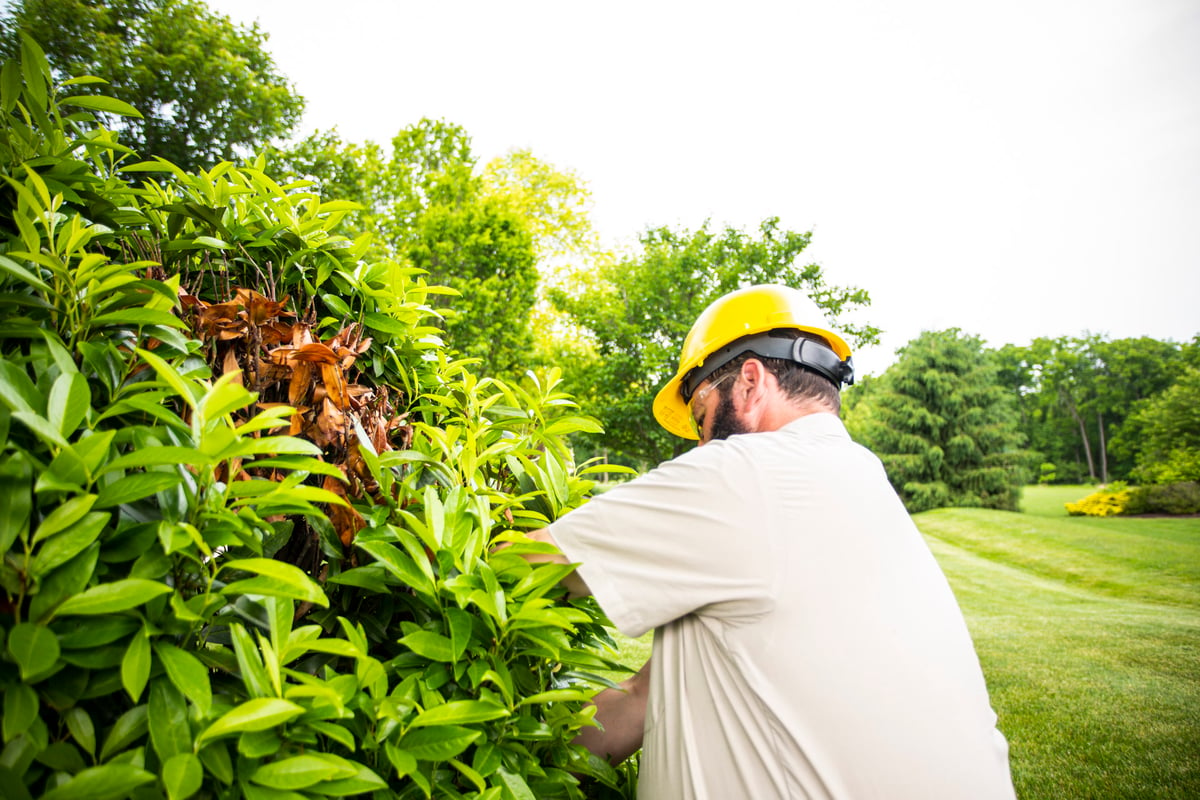
But with pruning a tree, you absolutely need to make sure you’re making the right cuts or you could actually harm the health of the tree (rather than help it).
That’s why we’ve rounded up these tree pruning tips that will help encourage best practices.
Tree Pruning Tips
These tips should help you get the best results in a safe and effective way.
1. Prune Trees with a Plan
It’s important to make sure that pruning cuts have a purpose. You prune to clean dead, dying, or diseased branches from the tree. You don’t want to haphazardly make cuts. Over-pruning and other errors can lead to more harm than good.
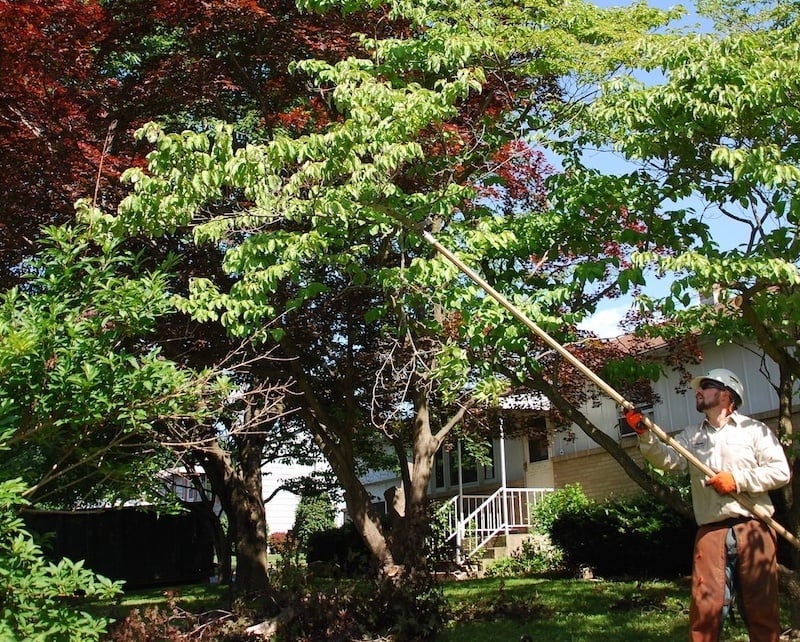
Some of the purposes for pruning (besides improving the tree’s health) are to train a tree to grow in a particular direction or shape to improve its canopy health and also to protect buildings or structures from overgrown limbs.
There are some different types of pruning that we describe in this article. They include crown cleaning, crown thinning, crown raising, and crown reduction.
2. Prune with the Proper Tools
The type of pruning tool that you (or a pro) are using will also have an impact on the results. Just as you wouldn’t use pruning shears to cut a large limb from a mature oak tree, you shouldn’t use a chainsaw on shrubs or ornamental trees. This leads to permanent damage to trees, shrubs and humans – and can also mess up your tools.
Know your pruning tools and use them wisely.
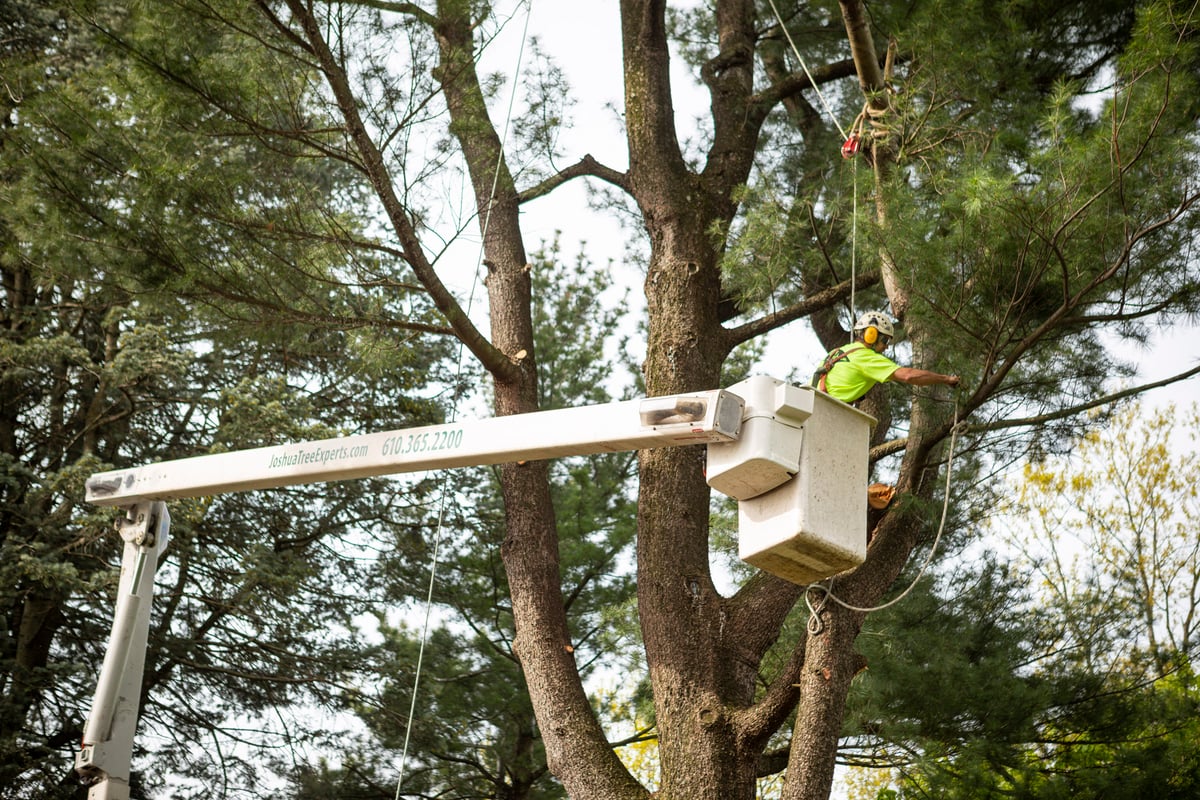
To keep tools in the best possible shape, it’s also vital that you take good care of them. In other words, even if you have the “right” tool, if it’s in bad shape, it’s still going to negatively impact your results.
If your tools are dull, in need of maintenance or low on lubrication, they aren’t going to perform as well as they should – and that makes for sub-par tree trimming and pruning.
3. Seek Out Diseased or Infected Limbs
As far as how to prune trees, your goal should be to seek out diseased or infected limbs as these are having a negative impact on the health of the tree as a whole.
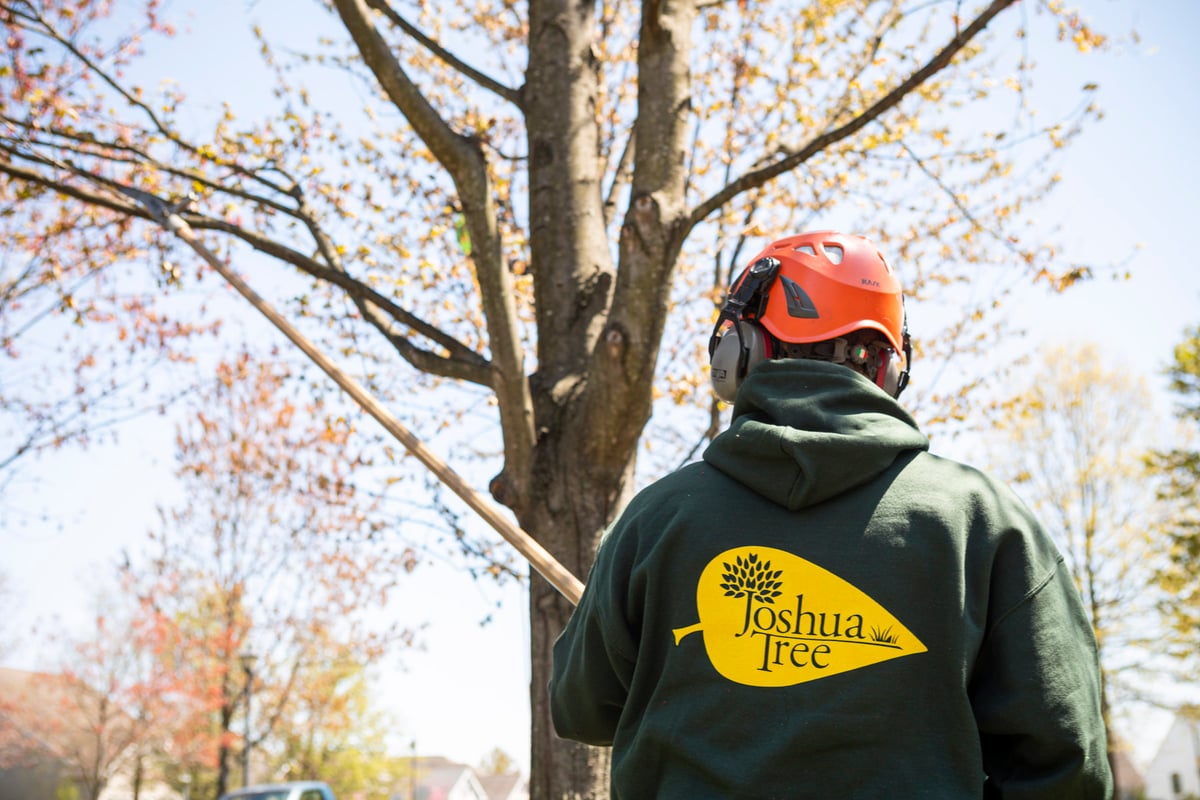
Another important tree pruning tip here is that while pruning those diseased or infected limbs, you should have a drop cloth below you. If these limbs hit the ground, those diseases and pests will be happy to live on the ground for a while until they find their way back to the tree (or another one in your landscape).
Dispose of diseased/infected tree parts properly so that they don’t re-infect your tree.
4. Prioritize Safety When Pruning
As we’ve said, tree pruning can be really dangerous work. Personal safety equipment (which we call PPE in the industry) is a must. This should include long sleeves, pants, boots, gloves, and safety goggles. A hard hat and climbing gear are also a must if you are ascending the tree.
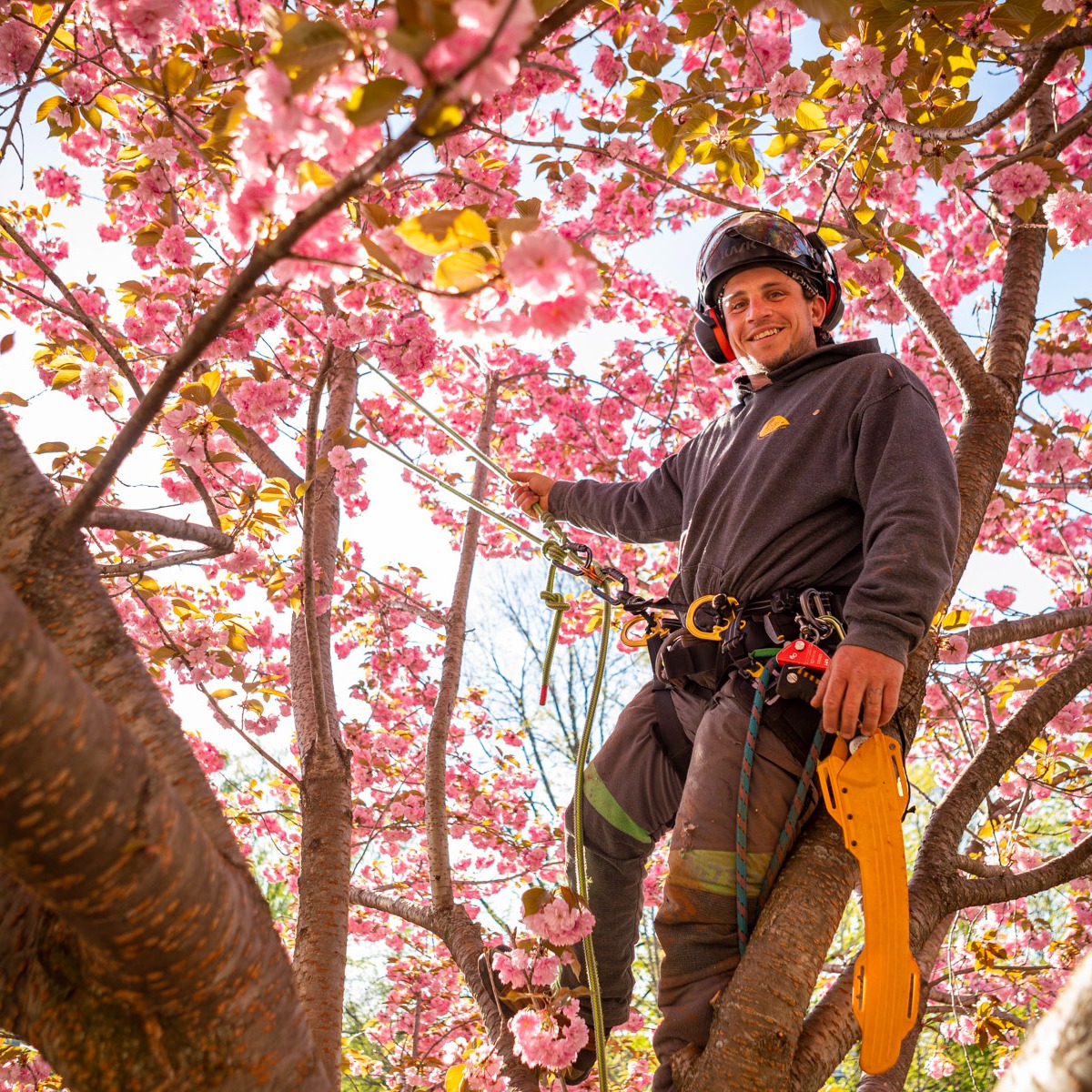
Never prune trees or shrubs from ladders, rooflines or stepping stools. It’s just plain hazardous. You should use the tree itself or a secure lifting mechanism. You should also utilize a proper fall protection system if you will be working at a dangerous elevation level above the ground.
These are all reasons why tree pruning truly is best left to professionals who prioritize safety.
The Value of Proper Tree Pruning
Hopefully these tips for trimming and pruning trees have given you a better understanding of what’s involved in the process (as well as the difference between trimming vs. pruning).
It’s important to note that tree pruning must be done with precision and care. That’s because even receiving just one improper pruning could damage a tree for life. It may not die, but it will absolutely impact its development and structure.
That’s why it’s important to handle the right tree pruning professional to handle this work. One of the biggest factors to look for is extensive training. You want to be sure that whoever is working on your tree knows what to look for and makes smart cuts that benefit the overall health of the tree—doesn’t negatively impact it in any way.
By choosing the right company, you can rest assured that you’re doing what’s needed to protect your investment in your tree. Instead of causing you future problems, your tree will be on its way to better health.
If you’d like to have a tree on your property assessed, contact us for a free consultation. Then you can rest assured knowing that we’ve got it completely under control.



